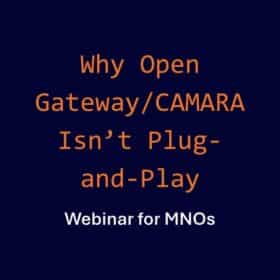5G Subscription Manager achieves Interwork with Summa Networks HSS/HLR
There are many reasons why you should consider replacing your HSS/HLR – here are some from Enea & Summa Networks

The HSS and preceding HLR have been a foundational part of mobile telecom infrastructure for years; proven, understood and reliable. So why consider any other option than staying with your existing supplier?
We believe it is time to look again: the environment around HSS is changing and the software development cycle probably means your existing supplier is talking to you about upgrade and change.
Why & Why now?
In simple terms:
- An aging HSS product may be reaching ‘end of life’ (EOL); it will incur higher support costs if you want to keep it active beyond that EOL point. Better to think of change before committing to specialist support deals.
- Innovation – will the existing HSS support the new, standard, interfaces added to it by 3GPP for 5G? Your supplier may be trying to charge custom software prices for ‘standard’ work….think before you spend.
- An expanding IoT business should not affect the core consumer business. A custom data model, distributed enterprise customer engagement, should be considered – does a monolithic HSS really suit this engagement?
- The network use cases will move to flexible expansion with enterprise and slicing. Going forward, the key to being smart about the data held in a HSS is the authentication models on access type and flexibility. In other words, a HSS instance can be tuned for performance and capacity for each type of use case and not just one ‘omni’ (slower) HSS.
- You may also simply want to move to the virtualized approach to expand – which is a simple statement but tough for a HSS as it holds ‘stateful’ data on users, devices, authentication and mobility.
Expanding HSS/HLR into new capacity and use cases can be a slow process, with risk and cost being the twin dilemmas. Moving to a software based expansion, that takes on-board new interfaces and a multi-vendor approach, can be a new way of breaking the deadlock of working with the incumbent suppliers and their project costs. The vision of 3GPP when defining an interface between the existing HSS/HLR and 5G UDM/UDR – was to enable disaggregation of network functions, without re-inventing working systems.
However, the new interface has been slow in its adoption as existing infrastructure suppliers see open interfaces as a commercial threat. This is where Enea’s functions and Summa Network’s HSS/HLR are opening the door for choice, combined with new network standards and a pre-certification, demonstrating that the 3GPP new interface definition works at a practical level.
Enea Cloud Native 5G applications have achieved interoperability with Summa Networks HSS/HLR using the NU1 & NU2 Interfaces, otherwise known as UDICOM. In our solution discussions, this provided the option for a tested, interoperable interface for the mobility use cases, specifically authentication, location, and IMS, and for interaction with universal data repository (5G UDR). The UDICOM interface was newly defined in 3GPP Release 16 and, as we noted above, has yet to be widely adopted. In this case the solution option from Enea and Summa is a fully software based evolution and expansion of existing HSS/HLR with 5G authentication, access and mobility functions combined with 5G resource storage for a scalable software solution.
This continues Enea’s commitment to open standard interoperability and giving our customers both functional and TCO benefit of scaling to the cloud. Interworking with Summa has proven that independently proven the new UDICOM interface works, addressing a principal challenge on their road to 5G. This is another key step in developing standard compliant multi-vendor eco-systems.
Enea Network functions include Stratum Network Data Layer, 5G Service Engine, Subscription Manager and Policy Manager, providing a range of subscriber data management, authorization, and traffic management capabilities for both 4G and 5G mobile environments.
To learn more about Summa HSS/HLR click:
https://www.summanetworks.com/home/use-cases/hss-hlr-replacement
Enea’s network functions:

